|
Condor The Condor is putting together the previous tests, the Dayton H6512 / JBL 2414H-C combo for the high section and the 10″ Peerless FSL-1020R02-08 pro woofer. Since there’s no way to tell how well they’ll integrate, I chose to adopt the practice in cinema sound systems, that is placing the horn/driver combo on top of the cabinet. If I’m happy with the sound, I can then proceed to cut a new front panel to accommodate the woofer and the horn.
As with most horn speakers, the challenge is to get a proper response. The Black plot in Fig 1 is the RAW response of the H6512/JBL2414H without any crossover. The Red plot is with my High Pass filter. To get the response looking this flat, I had to install an additional EQ network and a LCR for impedance flattening. Otherwise, I’ll end up with the dreaded “honking” that horns are so infamous for.
Now that I got the horn to respond the way I want, the next step is the Peerless FSL-1020R02-08. The Black plot (Fig 2) is the RAW response of the woofer mounted in a 45 liters bass reflex. This is the same box that I used for the Osprey-BR. The Blue plot is with a Low Pass network.
The Black plot is the crossover passband (Fig 3). Though the summation is good, there’s some light cancellations from 2kHz~4kHz. On playback, it’s not audible so there’s no point spending time to tidy it up.
The Violet plot in Fig 4 is the null response when I flipped the tweeter wires around. The null centers at 1.6kHz and is fairly deep. This indicates the JBL 2414 and the FSL-1020R02 are almost time-aligned.
Fig 5 is the final frequency response of the Condor. This is an exceptionally flat response for a horn speaker. What is interesting is there’s hardly any baffle step, hence I did not need to compensate for it in the crossover.
The Blue plot in Fig 6 is the nearfield measurement of the FSL-1020R02. It is a good approximation of what the lower frequencies look like without any room interference. Notice the ugly notch at 150Hz is not in the nearfield plot. It proves it’s an anomaly in my measuring setup. It’s actually a floor bounce that my microphone picked up.
The Brown plot in Fig 7 is the output from the front port. The pipe resonance at 1.3kHz and 2kHz is about -35dB below the fundamental. With the peaks so far down, there’s no danger of them contaminating the midrange.
The Condor is a “fast” speaker. The transient is almost vertical, hitting the apex at 200 microsec (Fig 8). Remember this is a 10″ woofer.
This is the first time I’m seeing an excess phase like this (Fig 9). The phase doesn’t rotate more than 360º.
The Toneburst plot in Fig 10 shows minimal artifacts in the treble. There is a bunch of excess energy at 10kHz but they are not an issue.
As can be seen, the Spectrogram (Fig 11) shows no audible ringing at 10kHz. In fact, the horn doesn’t exhibit any ringing in the treble.
The Condor is an easy load. Her Re is 6.7Ω (Fig 12), so Nominal Impedance would be at 8Ω. The lowest is 6Ω at 10kHz~20kHz. Her electrical phase doesn’t deviate much from 200Hz upwards. This will impose less stress on the power amplifiers. The saddle on the left shows the Condor is tuned to about 47Hz.
I tuned the Condor for lower bass (Fig 13). At 55Hz, she is at -6dB. Had I tuned her maximally flat (Red plot), she will be at 70Hz at -6dB. This reflex tuning is more suitable for home use. For pro use, I prefer the tuning in red. I don’t want too much bass when people are speaking into microphones. Sound of CondorWhen I first heard the Condor, I was reminded of how different a horn speaker is to that with dome tweeters. The music simply jumps out at you. Horns do not disperse the sound but rather concentrate it, somewhat like a flashlight/torchlight. That’s why horns are referred to as lenses. They focus the sound. The result of that is superior imaging and depth in the sound-stage. I played Amanda McBroom Midnight Matinee and it was a delight. In Ghost In This House, she came out perfect. There’s absolutely no exaggerated sibilance. And the acoustic guitar has body, depth best of all, rich in harmonics. Quite extraordinary. Another track that will flag excessive sibilance is Girl in the Other Room (Diana Krall). No hissing sibilance. The sibilance is there but it sounds natural. It is important not to kill off the sibilance, otherwise the music will lose the clarity. The difficult part is to get it just right. As for the bass, I’m surprised that it’s actually quite loud. Even though the bass frequencies are about -5dB below the midrange (Fig 5), they are not lacking in volume. Maybe because I’m using a 10″ woofer. In Love Will Keep Us Alive (Eagles-Hell Freezes Over), the bass is tight and fast. To hear how much texture that’s in the bass, I played Donna Summers’s Stop, Look and Listen. The texture is definitely there. Very few woofers are able to do these, fast, detailed and with texture. This Peerless FSL-1020R02-08 puts a lot of HiFi woofers to shame. All in, I’m more than satisfied with the Condor. Her performance exceeds most HiFi speakers for the same price. She is an ideal speaker for Home Theater too. As for professional use, I would restrict her to “Live” speech reinforcement. For Live Bands, crossing her at 2.0kHz would be safer for the JBL 2414H-C. Even at 2.0kHz, JBL had to install what they call a Sonic Guard to protect the 2414H-C. Sonic Guard is just a fancy marketing term for a resistor in parallel with two bulbs. Their purpose is to absorb the amplifier’s power when the 2414H-C is over-driven. Unless otherwise stated, all measurements were made in Full Space (4 pi) with the mic at 36 ins, tweeter axis. Impulse Window=5ms. No smoothing applied. |

May 7, 2021Projects
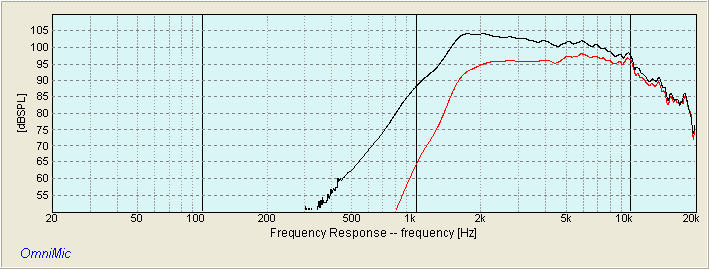 Fig 1 – Dayton H6512 horn with JBL 2414H-C
Fig 1 – Dayton H6512 horn with JBL 2414H-C Fig 2 – Peerless FSL-1020R02-08 RAW and Low Pass
Fig 2 – Peerless FSL-1020R02-08 RAW and Low Pass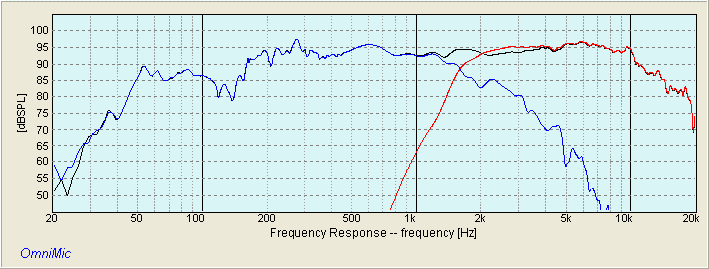
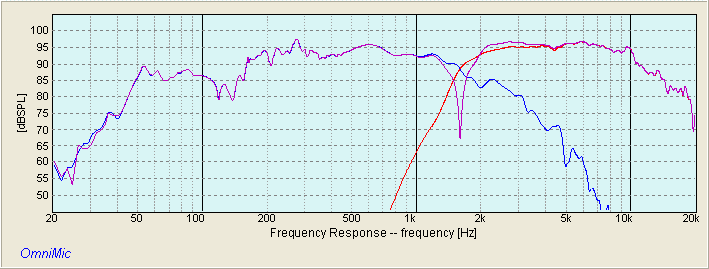 Fig 4 – Condor Null
Fig 4 – Condor Null Fig 5 – Condor Frequency Response
Fig 5 – Condor Frequency Response Fig 6 – Condor Nearfield Response
Fig 6 – Condor Nearfield Response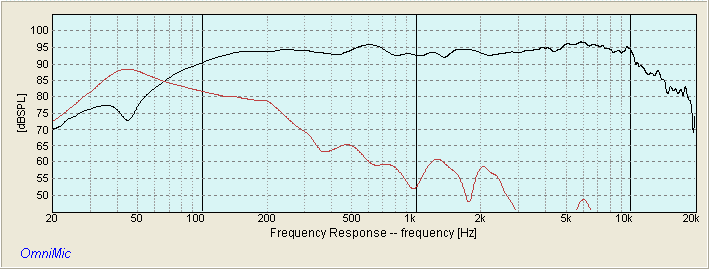 Fig 7 – Condor Port Output
Fig 7 – Condor Port Output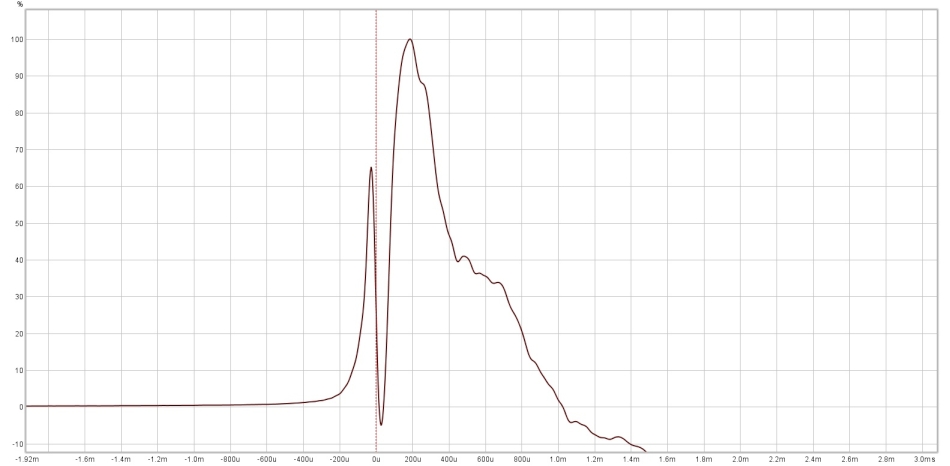 Fig 8 – Condor Step Response
Fig 8 – Condor Step Response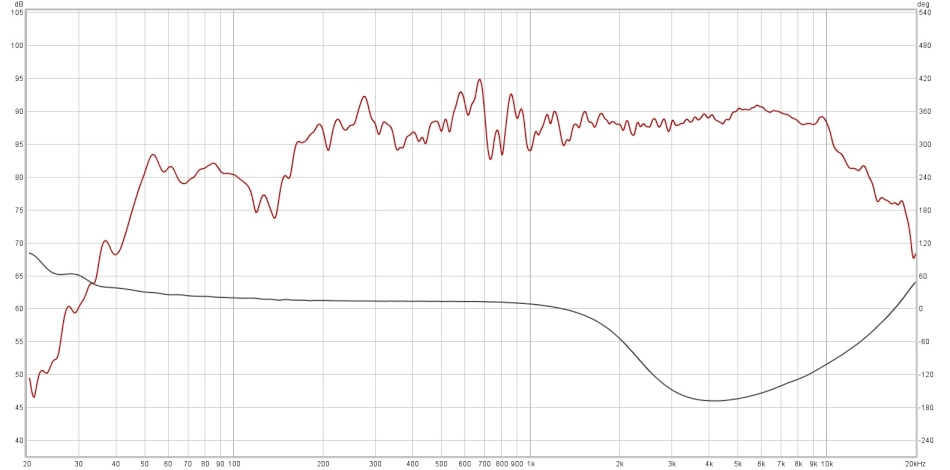 Fig 9 – Condor Excess Phase
Fig 9 – Condor Excess Phase Fig 10 – Condor Toneburst Energy Storage
Fig 10 – Condor Toneburst Energy Storage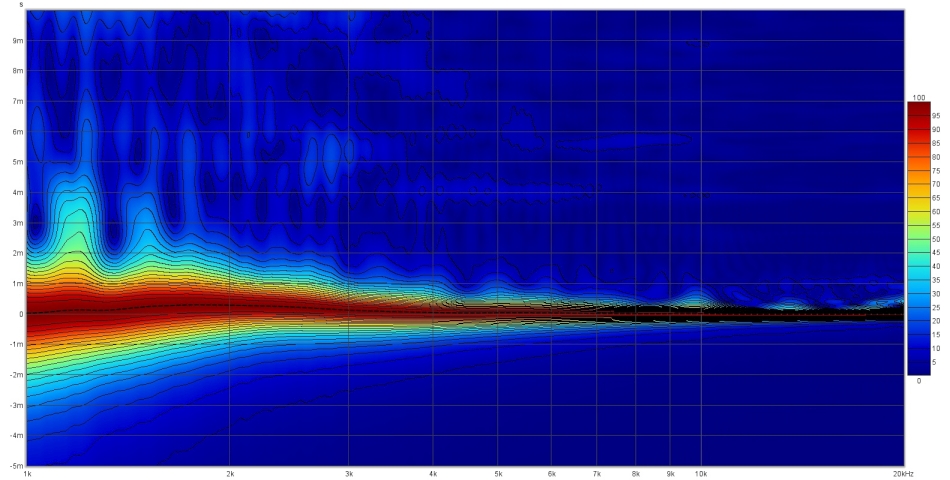 Fig 11 – Condor Spectrogram
Fig 11 – Condor Spectrogram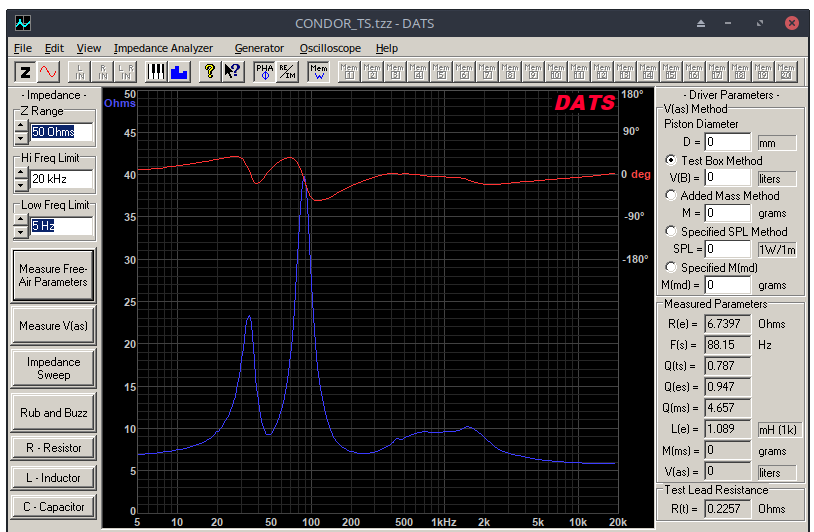 Fig 12 – Condor Impedance
Fig 12 – Condor Impedance Fig 13 – Condor Bass Reflex Tuning
Fig 13 – Condor Bass Reflex Tuning